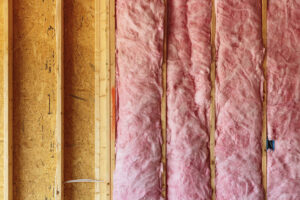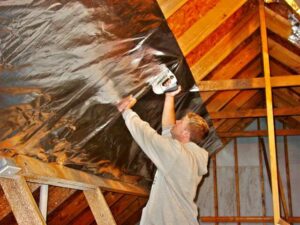When it comes to home improvements, most homeowners tend to focus on living areas like kitchens and bathrooms. However, unoccupied parts of the home also play an important role in the functioning of the whole. Take the attic, which can impact everything from the comfort level of the living areas to the energy efficiency of the heating and cooling systems. That’s why it’s worthwhile to have your attic professionally inspected and invest in recommended improvements. Here are five ways you can improve your attic:
1. Evict unwelcome tenants
You may think your attic is uninhabited, but are you sure? Attics are common areas for rats and mice to set up lodgings. Rodents can cause a lot of problems in an attic, from chewing through electrical wires, ductwork and insulation to defecating all over the place. Worse still, if they get inside the ductwork and defecate inside, the HVAC system could be spreading unsanitary germs throughout the home’s air stream.
If you suspect there are rodents living in your attic, it’s time to call an attic cleaning professional. Besides removing the rodents that are present in your attic, they’ll perform the equally important jobs of sanitizing the area and sealing all entry points to prevent reinfestation. Many attic cleaning professionals can also handle related work, including the subsequent tasks on this list.
2. Upgrade insulation

Upgraded attic insulation typically pays for itself within a few years. Photo: Atticare Construction ©2022
Another way to improve your attic is to bring its insulation up to modern standards. Over the years, building code changes have called for increasingly higher grades of insulation. So, if your insulation hasn’t been upgraded in more than two decades, it’s likely outdated and underperforming. By improving the home’s energy efficiency, replacing substandard attic insulation with R38 grade or better usually pays for itself within two to five years.
3. Seal the gaps
Individual air gaps between the attic floor and the living space below may be small, but altogether they can constitute a substantial amount of energy loss. This includes joints where walls meet ceilings, as well as gaps where electrical wires and mechanical equipment enter the attic. When conditioned air escapes into the attic through these areas, the home’s HVAC system has to work harder to maintain a comfortable climate, resulting in higher energy consumption. Sealing these air gaps is a permanent solution that will curb energy loss and lower your heating and cooling costs.
4. Install a radiant barrier

A properly installed radiant barrier can help lower an attic’s temperature on hot days. Photo: Atticare Construction ©2022
On hot summer days, the sun’s ultraviolet rays can penetrate your home’s roof and enter the attic, which can increase the temperature in the living areas. While proper insulation and air-sealing will help diminish this effect, there’s another step you can take to cool down your attic: installing a radiant barrier. Either in the form of aluminum-infused paint or foil sheeting applied on the underside of the roof, a radiant barrier reflects incoming solar energy back out of the attic. When properly installed, a radiant barrier can lower an attic’s temperature by 20 to 50 degrees on a hot day.
5. Install a whole-house fan
After being closed up during a hot day, it can be difficult to ventilate your home in the evening, even if the outdoor temperature is significantly cooler. A great solution is to install a whole-house fan in your attic. A whole-house fan pulls in cool air from outside while simultaneously exhausting stale indoor air, providing natural ventilation and temperature reduction. As a low-energy supplement to your home’s air conditioning system, a whole-house fan can also help reduce your energy bills.
Find a Diamond Certified company in your area
4 Responses
Leave a Reply
You must be logged in to post a comment.

My electricity bill is obnoxious, so I decided to do a little research and came across your article. I am embarrassed to admit that I have not even addressed the first item on your list. My home is over 30 years old, and the insulation has never been updated. Since it has never malfunctioned, I didn’t see any reason to replace it. New roof insulation is clearly the first thing I need to invest in. Thank you for sharing such helpful information.
Awesome suggestion to build a radiant barrier. Even at it’s worst, they can lower the temperature significantly so it’s a great investment. Thanks for the idea.
I’m trying to figure out what I should use as insulation in my attic. I’m mostly looking for the most energy efficient option. It seems like maximizing the attic insulation would be the best way for me to handle this! Thank you for sharing.
I agree that one of the most basic and effective ways to improve your home’s energy efficiency is to bring your attic insulation up to current standards. You also mention that putting new insulation in your attic usually pays for itself in two to five years. I think it’s a good idea to choose an insulting contractor that has experience using the type of insulation that your house needs.